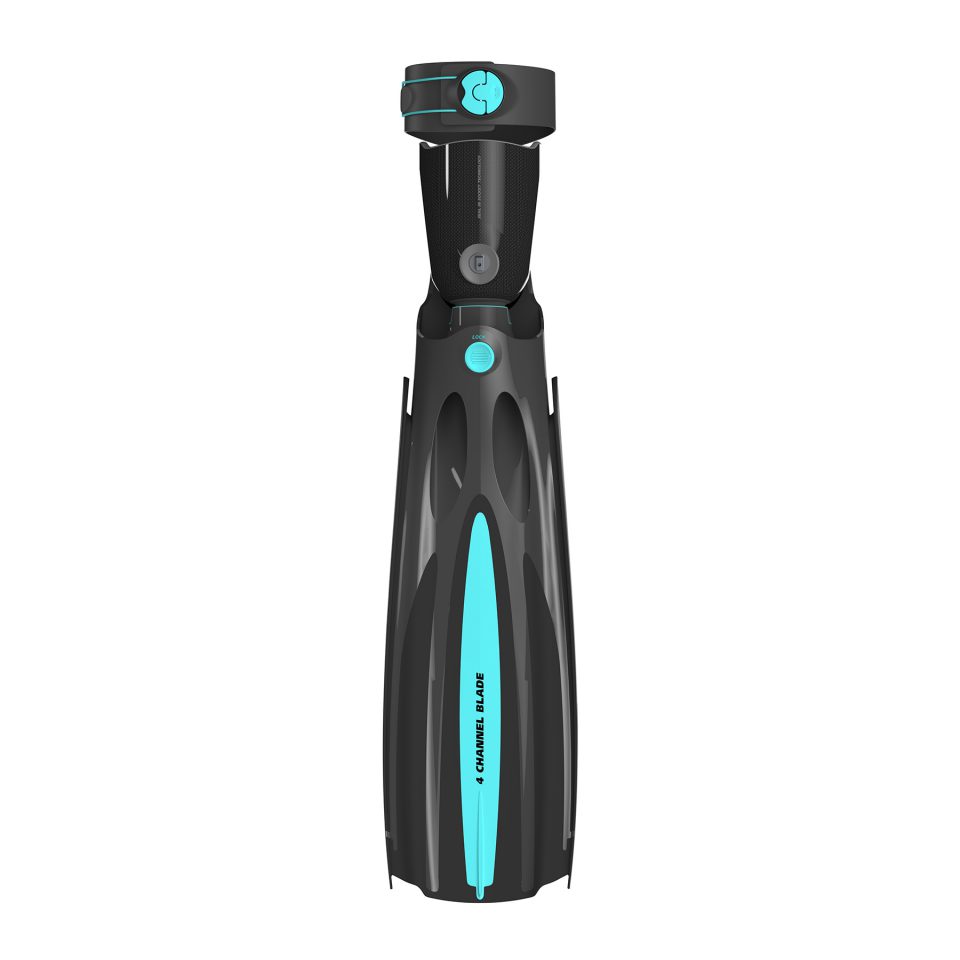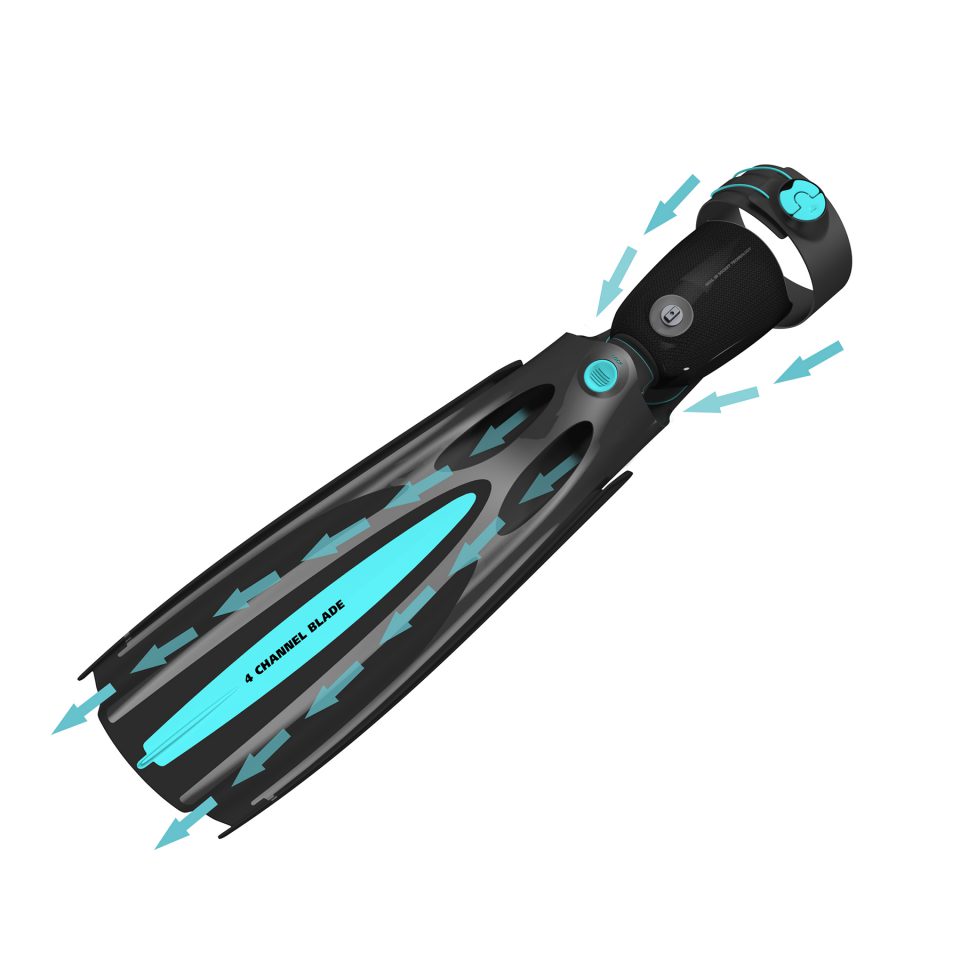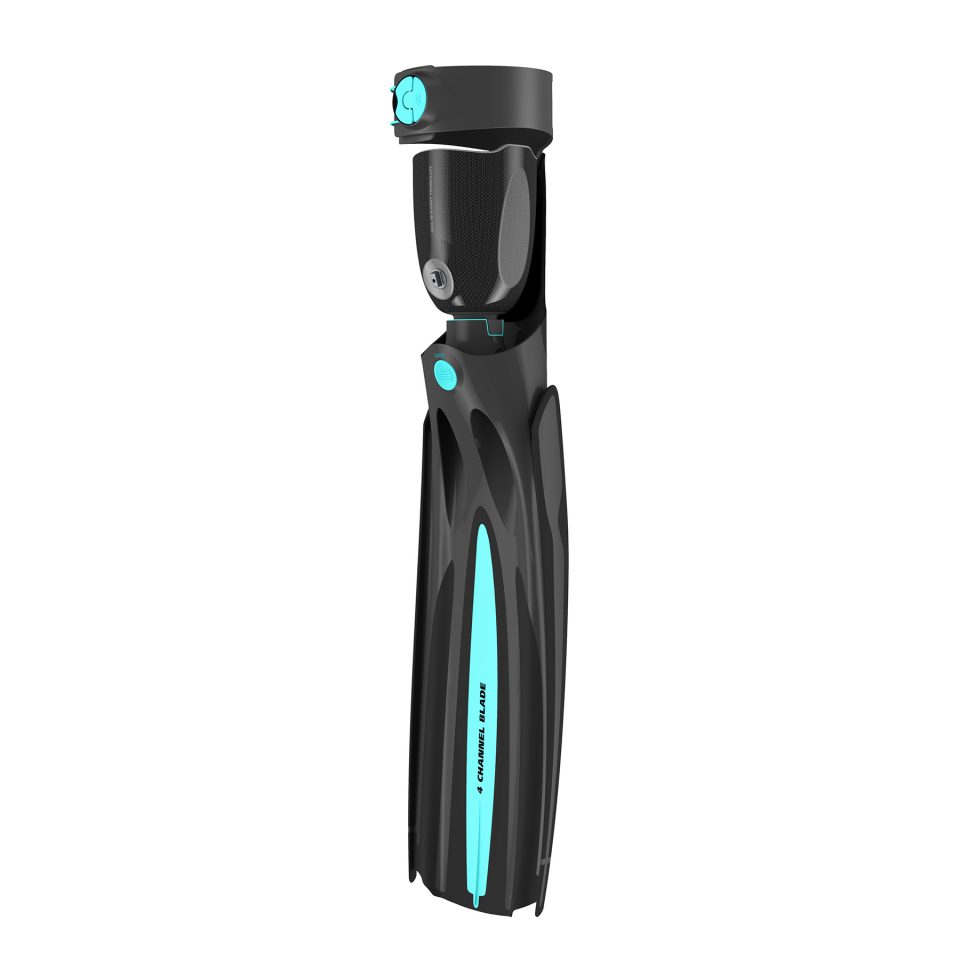


Stingray is a prosthesis for swimming and water sports. The maintenance of physical fitness and health is of enormous importance for amputees, especially because a constant weight balance takes place with every movement. Sport releases endorphins and reduces stress. Swimming in particular trains the entire body, strengthens muscles, improves stamina, posture and flexibility. Technical aids are commonplace in sporting activities. Unfortunately, physically handicapped people are often either excluded from many sports or can only perform them with massive restrictions in mobility. Sporting goods have meanwhile become trendy accessories and convey an active lifestyle. Why shouldn’t a sports prosthesis also convey a positive feeling?
The decisive factor for the design of Stingray is the adaptability of the swimming prosthesis to different femoral stumps. The Stingray swimming prosthesis consists of two parts, a fin and an adapter. The prosthesis wearer also carries a silicone seal-in liner and a custom-made socket. The installation of the Stingray adapter at the end of the socket allows the fin to be attached.
Another important function of the floating prosthesis is the canalisation of the water. Since the fin is open at the back to ensure the adaptation of the different residual limb shapes, water can accumulate at this point. To prevent this, two channels have been designed to drain the water. Due to the material mix of soft rubber and hard plastic an optimal water flow as well as the power transmission of the swimming movements to the fin is guaranteed. The upper part of the fin is stiff and inflexible, while the lower part becomes softer.
Diploma 2011